Insulating a Quonset building offers numerous benefits, making it a worthwhile endeavor for any property owner. Whether you are using your Quonset as a storage facility, workshop, or even a living space, proper insulation can make all the difference in creating a comfortable and functional environment.
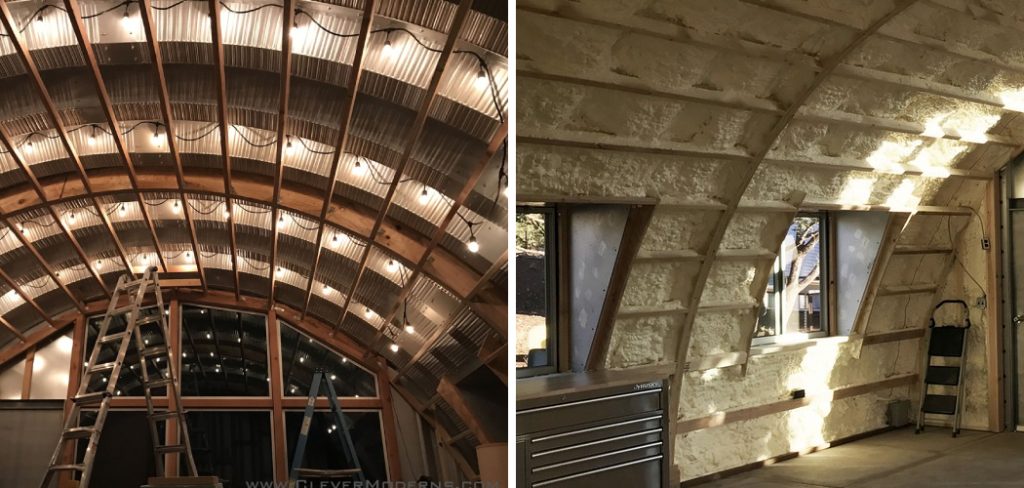
The main advantage of insulating a quonset building is the significant cost savings. By adding insulation to your structure, you can reduce heating and cooling costs by up to 50%. This not only saves you money in energy bills but also reduces your carbon footprint.
Another advantage is the improved comfort and usability of the space. With proper insulation, a quonset building can be used year-round, even in extreme temperatures. In this blog post, You will learn in detail how to insulate a quonset building.
Materials You Will Need
- Paint
- Paintbrushes
- Canvas or paper
- Palette (optional)
- Water container(s) for cleaning brushes
- Paper towels or rags for wiping excess paint and water
- Easel (optional)
- Mixing knife (optional)
- Palette knives (optional)
- Masking tape
In addition to these basic materials, you may also want to consider a few other items to enhance your painting experience and help you achieve different effects.
Step-by-step Instructions for How to Insulate a Quonset Building
Step 1: Inspect the Building
Before you start insulating your Quonset building, it’s important to inspect the building and identify any areas that may need extra attention. Look for any cracks, holes or gaps in the structure that could let in drafts or moisture.
Step 2: Choose Your Insulation Material
There are a few different types of insulation materials that can be used for Quonset buildings, including fiberglass, spray foam, and rigid foam insulation. Consider factors such as cost, R-value (thermal resistance), and ease of installation when choosing the right material for your building.
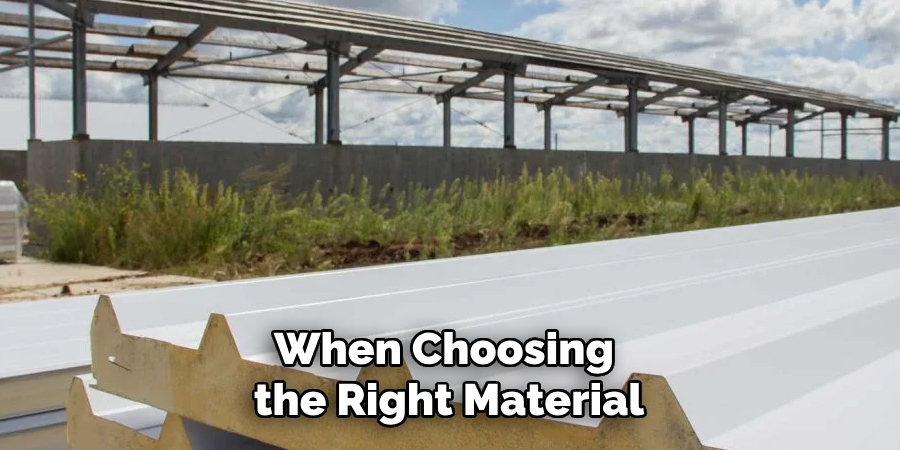
Step 3: Prepare the Building
Before installing insulation, make sure to clear out any debris or obstructions from the walls and ceiling of your Quonset building. This will ensure a smooth and even application of the insulation.
If you’re using fiberglass or rigid foam insulation, measure the length and width of each wall and cut pieces to fit snugly between the framing. For spray foam insulation, no cutting is required as it expands to fill any space.
Step 4: Install Insulation in Walls
Starting at one corner of the building, place the cut insulation between the framing of the wall and press it firmly into place. Continue this process until all walls are insulated. For the ceiling, use long strips of insulation that span across the width of your Quonset building. Place them between the trusses and secure them in place with staples or nails.
Step 5: Seal Any Gaps and Cracks
To ensure maximum insulation, use caulk or foam sealant to fill in any gaps or cracks between the insulation and framing. This will prevent drafts and moisture from entering the building. A vapor barrier can be installed over the insulation to prevent moisture from entering the building. This can be particularly important for Quonset buildings in humid climates.

Step 6: Install Interior Wall Covering (Optional)
If you plan on finishing the interior of your Quonset building, now is the time to install any wall covering such as drywall or paneling. This will provide additional insulation and a finished look to your building.
Regularly check the insulation in your Quonset building for any signs of wear or damage. Replace or repair as needed to ensure maximum efficiency and protection for your building.
By following these step-by-step instructions, you can effectively insulate your Quonset building and create a comfortable and energy-efficient space. Remember to choose the right insulation material for your needs, properly prepare the building, and maintain the insulation for long-lasting results.
Safety Tips for How to Insulate a Quonset Building
- Wear protective gear such as gloves, goggles, and a dust mask when handling insulation materials to avoid skin irritation and respiratory issues.
- Use caution when cutting or handling fiberglass insulation, as it can cause itching and irritation on the skin. Consider wearing long sleeves and pants for added protection.
- Take breaks during the installation process to avoid overexertion and exhaustion.
- Be aware of any electrical wiring or fixtures within the walls and ceiling of your Quonset building to avoid damaging them during installation.
- If using spray foam insulation, make sure to follow the manufacturer’s instructions for proper ventilation and curing time.
- Do not compress insulation material as it can decrease its effectiveness. Make sure to fill all gaps and spaces evenly with insulation.
- If installing a vapor barrier, make sure it is properly sealed to prevent any moisture buildup between the insulation and building structure.
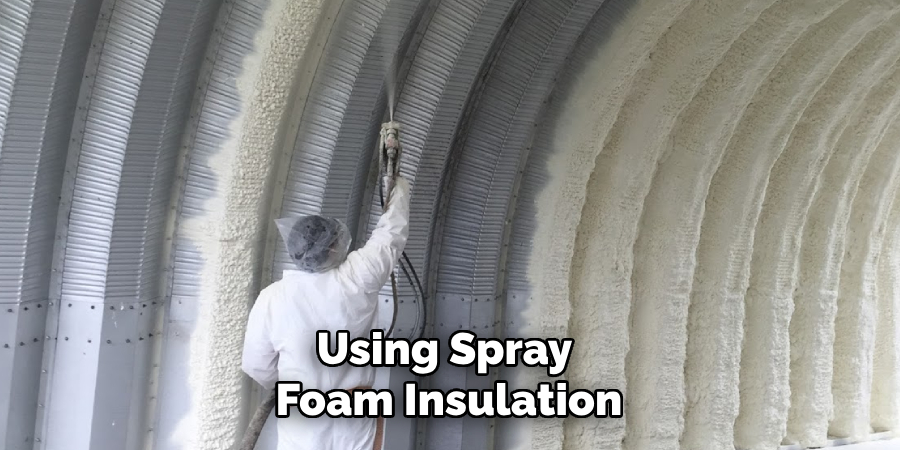
By following these safety tips and taking necessary precautions, you can ensure a safe and successful insulation process for your Quonset building. Remember to prioritize your well-being while working on this project.
Types of Insulation Options for a Quonset Building
- Fiberglass Insulation: This is one of the most common and cost-effective types of insulation for Quonset buildings. It can be easily installed and has a good R-value.
- Spray Foam Insulation: This type of insulation expands to fill any space, creating an air-tight seal. It also has a high R-value but can be more expensive.
- Rigid Foam Insulation: This type of insulation is more rigid and can provide better moisture and air barrier compared to other options. It also has a high R-value but can be more expensive.
- Reflective Insulation: This type of insulation works by reflecting heat away from the building, making it ideal for hot climates. However, it may not be as effective in colder climates.
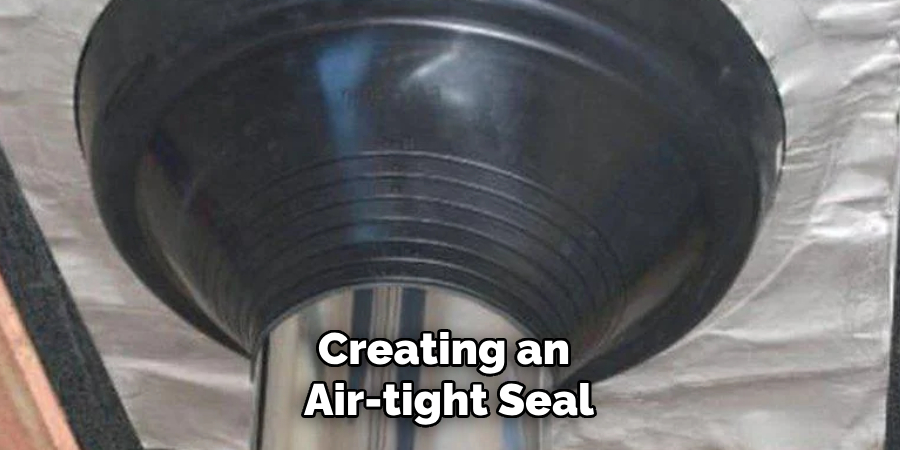
Consider your climate, budget, and insulation needs when choosing the right type of insulation for your Quonset building. By selecting the right material and correctly installing it, you can create a comfortable and energy-efficient space that will benefit you in the long run.
Advantages of Insulating a Quonset Building
- Increased Energy Efficiency: One of the major advantages of insulating a Quonset building is that it can significantly improve its energy efficiency. This is because insulation acts as a barrier, preventing the transfer of heat between the inside and outside of the building. As a result, insulated Quonset buildings require less energy to maintain comfortable temperatures, leading to lower heating and cooling costs.
- Enhanced Comfort: Insulation not only helps with energy efficiency, but it also increases the overall comfort of a Quonset building. With proper insulation, the interior of the building will have more consistent temperatures, reducing any drafts or cold spots. This is especially beneficial for buildings that are used as living spaces or workspaces.
- Reduction in Noise Levels: Another advantage of insulating a Quonset building is that it can help reduce noise levels. Insulation acts as a sound barrier, absorbing and blocking external noises from entering the building. This can be particularly helpful for buildings located in noisy areas or used for activities that require a quiet environment.
- Protection Against Condensation: Without proper insulation, moisture can build up inside a Quonset building, leading to condensation. This can cause damage to the structure and any items stored inside. Insulation helps regulate temperature and humidity levels, preventing condensation and protecting the building from potential damage.
- Increased Durability: By insulating a Quonset building, you can also increase its overall durability. Insulation provides an extra layer of protection against the elements, such as extreme temperatures and moisture, which can cause rust and corrosion. With insulation, the building’s lifespan can be extended, reducing the need for frequent repairs or replacements.
- Versatility: Quonset buildings are used for a variety of purposes, from storage to workshops to retail spaces. Insulation allows for more versatility in how the building is used. It can create a more comfortable environment for work or living spaces, making it suitable for a wider range of activities.
- Cost Savings: While there is an initial cost associated with insulating a Quonset building, the long-term cost savings can be significant. With improved energy efficiency and reduced maintenance needs, you can save money on utility bills and repairs over time.
- Increased Property Value: Insulation can also increase the overall value of a Quonset building. It adds an extra layer of functionality and longevity, making it more attractive to potential buyers or tenants. Additionally, with the rising importance of energy efficiency in buildings, an insulated Quonset building may be more desirable in the real estate market.
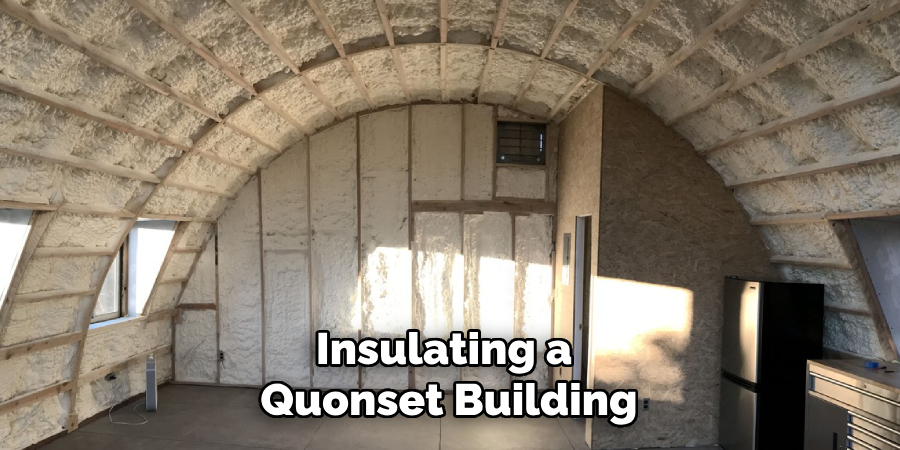
By understanding the advantages of insulating a Quonset building, you can make an informed decision about whether to include insulation in your own building project. Whether you are looking for energy efficiency, comfort, durability, or cost savings, insulation can provide numerous benefits and improve the overall quality and functionality of your Quonset building.
Special Considerations for Insulating Older or Damaged Quonset Buildings
1. Know the Building’s History
Before insulating an older or damaged Quonset building, it is important to know its history. This includes understanding when the building was constructed, what materials were used, and any previous modifications that may have been made.
2. Assess the Structural Integrity
Since older or damaged Quonset buildings may have sustained wear and tear over the years, it is crucial to assess the structural integrity before insulating. This includes checking for any cracks, rust, or damage that could compromise the building’s stability.
3. Consider Moisture Control
Moisture can be a major issue in older or damaged Quonset buildings, especially if there are existing leaks or poor ventilation. Before insulation, make sure to address any moisture problems, such as fixing leaks and improving ventilation.
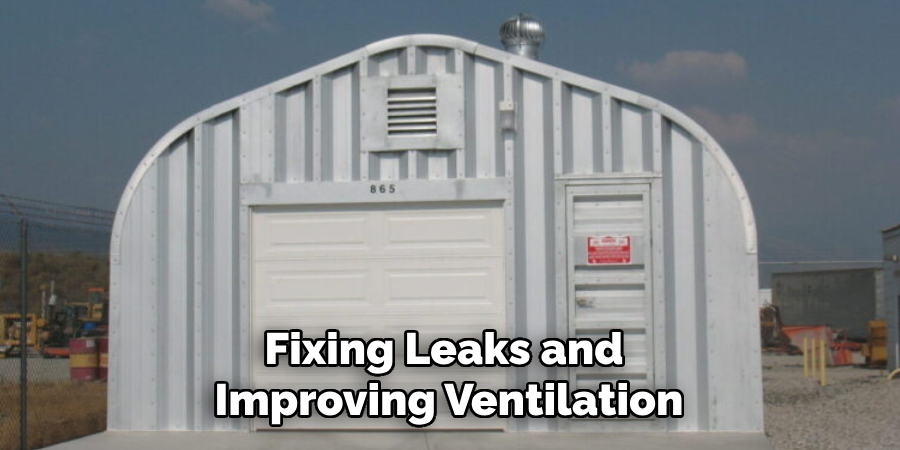
4. Choose the Right Insulation Material
There are various insulation materials available in the market, but not all may be suitable for older or damaged Quonset buildings. Consider factors such as durability, fire resistance, and moisture resistance when choosing the right insulation material.
5. Follow Proper Installation Techniques
Proper installation is key to ensuring the effectiveness of insulation. For older or damaged Quonset buildings, it is even more important to follow proper installation techniques to avoid further damage and ensure a secure fit.
6. Consider Energy Efficiency
Insulating an older or damaged Quonset building not only improves its comfort but also its energy efficiency. Choose high-quality insulation materials with good R-values to reduce energy consumption and lower utility costs.
7. Consult a Professional
When in doubt, it is always best to consult a professional before insulating an older or damaged Quonset building. They can provide expert advice on the most suitable insulation materials and techniques for your specific building.
By taking these special considerations into account, you can effectively insulate your older or damaged Quonset building and improve its overall functionality. Keep in mind that proper insulation not only enhances the comfort of the building’s occupants but also protects the structural integrity of the building itself.
Eco-friendly Insulation in a Quonset Building
In addition to the special considerations mentioned above, it is also important to consider the environmental impact of insulating an older or damaged Quonset building. Here are some eco-friendly insulation options that can be used in these types of buildings:
1. Recycled Denim Insulation
Recycled denim insulation is a sustainable option for insulating older or damaged Quonset buildings. It is made from recycled denim and cotton fibers, making it a renewable and eco-friendly choice.
2. Cellulose Insulation
Cellulose insulation is another environmentally friendly option that can be used in Quonset buildings. It is made from recycled paper products and has good moisture resistance, making it suitable for older or damaged buildings.
3. Wool Insulation
Wool insulation is a natural and renewable option for insulating Quonset buildings. It is made from sheep’s wool, which has excellent thermal properties and can also absorb moisture without compromising its effectiveness.
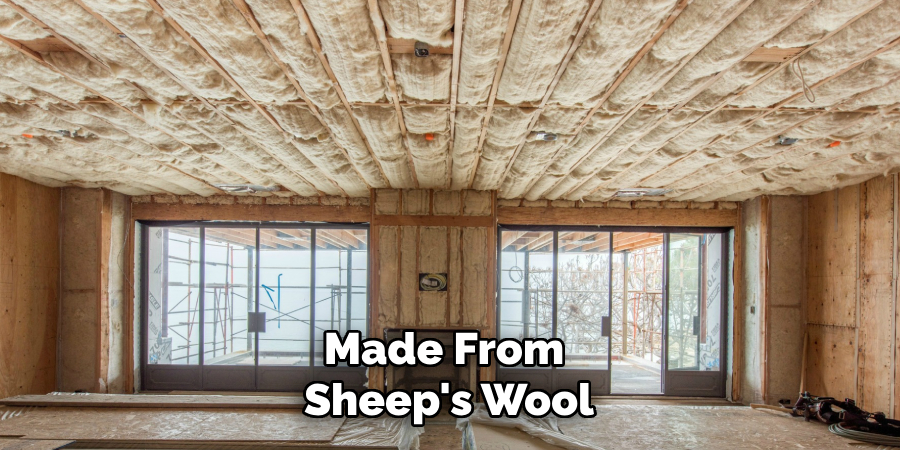
4. Recycled Fiberglass Insulation
Recycled fiberglass insulation is another eco-friendly choice for older or damaged Quonset buildings. It is made from recycled glass and has good thermal resistance, making it a popular choice for insulation.
5. Cork Insulation
Cork insulation is a sustainable and renewable option that can be used in Quonset buildings. It is made from the bark of cork trees and has excellent thermal properties, making it an effective insulator.
6. Soy-based Spray Foam Insulation
Soy-based spray foam insulation is a more eco-friendly alternative to traditional spray foam insulation. It is made from renewable soybean oil and has low VOC emissions, making it a safer option for both the environment and the building’s occupants.
7. Cotton Batt Insulation
Cotton batt insulation is another sustainable choice that can be used in Quonset buildings. It is made from recycled cotton fibers and does not contain any harmful chemicals, making it a safe and eco-friendly option.
By opting for these eco-friendly insulation options, you can not only improve the energy efficiency and comfort of your older or damaged Quonset building but also reduce your carbon footprint. Always consider sustainability when making decisions about building materials and practices to create a more environmentally friendly structure.
What Are the Potential Risks of Not Properly Insulating a Quonset Building?
When it comes to constructing a quonset building, proper insulation is crucial for both safety and energy efficiency reasons. Without proper insulation, there are several potential risks that can arise. One of the most significant risks of not properly insulating a quonset building is fire hazard.
This type of building typically uses metal panels as its primary structure, which can become extremely hot during the summer months. Without proper insulation, these metal panels can become a fire hazard if they come into contact with electrical wiring or any other sources of heat.
Furthermore, without insulation, a quonset building can also experience significant temperature fluctuations.
This means that it can get too hot in the summer and too cold in the winter, making it uncomfortable for anyone working or living in the building. In addition, these extreme temperature changes can also lead to structural damage and increased wear and tear on the building.
Another potential risk of not properly insulating a quonset building is moisture buildup. Without insulation, condensation can form on the metal panels, leading to mold growth and rusting. This not only poses health risks for those inside the building but can also cause structural damage over time.
Conclusion
In conclusion, insulating a quonset building is not only beneficial for temperature control and energy efficiency, but also for soundproofing and moisture resistance. By following the steps outlined in this blog post, you can effectively insulate your quonset building and create a comfortable and functional space.
Additionally, it is important to choose the right type of insulation for your specific needs. For example, if you live in a cold climate, it is recommended to use a higher R-value insulation to better retain heat. On the other hand, if your main concern is soundproofing, then acoustic insulation would be a better choice.
I hope reading this post has helped you learn how to insulate a quonset building . Make sure the safety precautions are carried out in the order listed.
